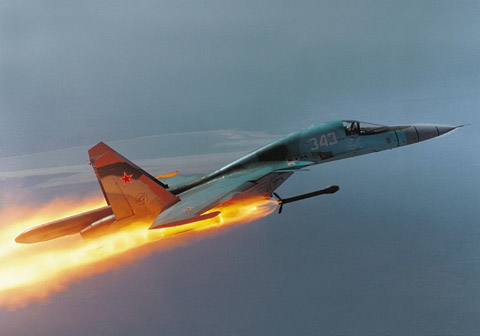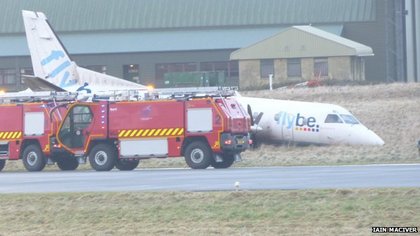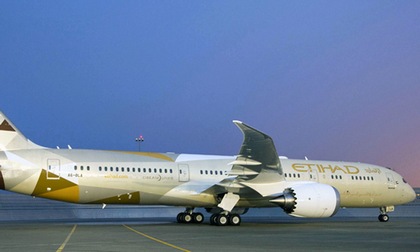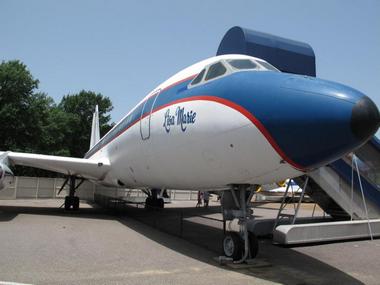
























MIDWEEK UPDATE 14 JANUARY 2015
By Pilot's Post Team
Plan your weekend
Forthcoming events
This week in aviation history
Aviation News
Advertising rate card


30 January: Dias Festival Mossel Bay airshow. Contact Horace Blok e-mail hab@habac.co.za 083 261 6300
30 January: Sports Aerobatics Club Western Cape regionals - Mossel Bay. Contact Annie Boon chunge@mweb.co.za
7 February: MISASA Best of the Best at Kitty Hawk Wings - Wheels - Water Showcase. Contact: John Boucher e-mail: comms@misasa.org Cell: 082 553 1105 or Alan McKenzie e-mail: nemo@webo.co.za Cell: 082 373 4947
27 February-1 March February: Swellengrebel fly-in. Contact Pieter Venter pventer@vgv.co.za Cell: 083 250 9504
28 February: Bethlehem Aero Club annual Sling, Bushbaby and chopper fly-in. Contact Izak Venter e-mail: izak@motsu.co.za or Francois Marais e-mail: info@stanfra.co.za
21 March: Touring Motor Glider Fly-in at Kittyhawk. Contact Marietjie 0827656670 or E-mail marietjievn@gmail.com
21-22 March: RV's at Parys. Pylon event, a formation competition, an aerobatics event (competition?) as well as possibly a "best build" competition. Contact Scully Levin e-mail: flyboys@global.co.za
27 March: Bethlehem fly-in and Riana Nel show. Contact Jacolene Jacobs 082 854 1003
28 March: Bethlehem Aero Club fun navigation rally. Contact Izak Venter e-mail: izak@motsu.co.za or Francois Marais e-mail: info@stanfra.co.za
27 - 28 March: Uitenhage Wings & Wheels festival. Contact Lourens Kruger 082 320 2615 Website: www.wingsandwheelsfestivalutenhage.co.za
28 - 29 March: Sports Aerobatics Club North-West regionals - Klerksdorp. Contact Annie Boon chunge@mweb.co.za
11 April: Fashkosh (Stellenbosch) Website: www.stelfly.co.za Contact Alewyn Burger Alewyn@burger.org.za Cell: 082 416 1951
15 to 18 April: AERO Friedrichshafen dedicates itself in offering a significant collection of aviation related products and accessories. Exhibitors will be showing engines, modern ultra-lights, powered aircraft, avionics and related products and services. Over the years, this show has gained huge reputation from all over the world and the positive reaction from the attendees has motivated the exhibitors to improve the existing range and manufacture more such effective spare parts and products. For further information on the tour African Pilot is planning please send an e-mail to Athol Franz: editor@africanpilot.co.za. The idea is to get a package deal together for about 10 to 12 persons wishing to visit AERO Friedrichshafen.
17 & 18 April: Zebula airshow. Contact: Paul Weich 083 290 6525 e-mail: pdweich@mweb.co.za
18 to 29 April: Sun 'n Fun Tour 2015, Lakeland, Florida, USA. Contact Neil Bowden: e-mail: neil1@telkomsa.net
Neil Bowden will once again be organising a tour to the USA's second largest fly-in, the Sun 'n Fun Fly-in and International Expo. In addition to the airshow, we will be arranging an excursion to the Kennedy Space Centre. A great new feature here is the Space Shuttle Atlantis exhibition building housing the original Atlantis Shuttle. Also planned is a visit to the Kermit Weeks Fantasy of Flight Museum which is home to some very rare aircraft and while we are in the area there are planned visits to the theme parks - Disney and Universal. The price is from R14 750 per person plus airport tax (about R7 400).
29 April-3 May: Aero Club Air week at Parys airfield contact Kev Storie 011 082 1100 Website: www.aeroclub.org.za

January 13 1942 - Heinkel test pilot Helmut Schenk becomes the first person to escape from a stricken aircraft with an ejection seat after the control surfaces of the first prototype Heinkel He 280 V1, DL+AS, ice up and become inoperable. The fighter, being used in tests of the Argus As 014 impulse jets for Fieseler Fi 103 missile development, had its regular Heinkel-Hirth HeS 8A turbojets removed, and was towed aloft from Rechlin, Germany by a pair of Bf 110C tugs in a heavy snow-shower. At 7,875 feet (2,400 m), Schenk found he had no control, jettisoned his towline, and ejected.
January 14 1936 - Howard Hughes (Howard Robard Hughes, Jr.) in a Northrop Gamma 2G, NR13761, which he had purchased from Jackie Cochran, sets a transcontinental speed record of 9 hours 27 minutes, averaging 417.0 kilometers per hour (259.1 miles per hour). (FAI Record File Number 13237).
January 15 1991 - First hot-air balloon 'Virgin Pacific Flyer' to cross the Pacific Ocean takes off from Japan to Northern Canada with Per Lindstrand and Richard Branson, flying in the trans-oceanic jet streams, it recorded the highest ground speed for a manned balloon at 245 mph (394 km/h).
January 15 1990 - First flight of the Denel Rooivalk
January 15 1970 - Death of William Thomas Piper Sr., American airplane manufacturer, and founder, eponym, and first president of Piper Aircraft Corporation. Piper served in the Spanish-American War and WWI.
January 16 2003 - Launch: Space Shuttle Columbia STS-107 at 15:39:00 UTC. Loss of vehicle and crew before landing at KSC.
January 16 1975 - USAF sets new climb-time records with a stripped and unpainted McDonnell Douglas F-15 A Streak Eagle aircraft, operating from Grand Forks Air Force Base, North Dakota. The Streak Eagle reaches a height of 3,000 m (9,843 ft.) in 27.57 s., 6,000 m (19,685 ft.) in 39.33 s., 9,000 m (929,528 ft.) in 48.86 s., 12,000 m (39,370 ft.) in 59.38 s. and 15,000 m (42,2132 ft.) in 1 min. 17.02 s
January 16 1929 - Lady Mary Bailey complete her return flight from Cape Town to London in her de Havilland DH60 Moth.
January 18 2005 - The world's largest passenger plane, the Airbus A380, gets unveiled in an elaborate ceremony in France.
January 18 1982 - Thunderbirds Indian Springs Diamond Crash: The worst accident in U.S. Air Force Thunderbirds Demonstration Team history involving show aircraft, when four Northrop T-38A Talons, Numbers 1-4, 68-8156, -8175, -8176 and -8184, crashed during pre-season training on Range 65 at Indian Springs Air Force Auxiliary Field, Nevada (now Creech Air Force Base). While practicing the four-plane line abreast loop, the formation impacted the ground at high speed, instantly killing all four pilots: Major Norm Lowry, leader, Captain Willie Mays, Captain Pete Peterson and Captain Mark Melancon. The cause of the crash was officially listed by the USAF as the result of a mechanical problem with the #1 aircraft's control stick actuator. During formation flight, the wing and slot pilots visually cue off the #1 lead aircraft, completely disregarding their positions in relation to the ground. The crash of a team support Fairchild C-123 Provider on 10 October 1958 killed 19.
January 18 1957 - Three Boeing B-52 Stratofortresses make the world's first round the world, non-stop flight by turbojet-powered aircraft. The flight is completed in 45 hours 19 min, with an average speed of 534 mph (859 km/h)
January 19 1978 - Solar One, the world's first solar-powered aircraft, makes its first flight in England.
January 19 1946 - First Flight of the Bell X-1. Originally designated XS-1, joint NACA-U. S. Army/USAF supersonic research project, first of the so-called X-planes.
January 19 1919 - Jules Védrines claims an FF25,000 prize by landing an aircraft (a Caudron G-3) on the roof of a department store in Paris. Védrines is injured and his aircraft is damaged beyond repair in the hard landing in a space only 28 metres (92 ft) x 12 metres (39 ft).
January 19 1908 - The world's first official aerodrome, Port-Aviation, is opened outside of Paris, France.
January 20 1930 - Edwin Eugene "Buzz" Aldrin, Jr., American pilot and astronaut, is born. Aldrin was the Lunar Module Pilot on Apollo 11, the first lunar landing. He was the second person to have set foot on the Moon, after Mission Commander Neil Armstrong.
January 20 1916 - The first airship raid on Britain. Zeppelins of the Imperial German Navy Airship Division dropped bombs on Great Yarmouth and King's Lynn, Norfolk, killing 5 people. The RFC flew its first ever night sorties against the raiders, but two aircraft failed to intercept.

EXCEPTIONAL ENVIRONMENTAL EFFORTS PLACE SOUTH AFRICAN AIRWAYS (SAA) AS ONE OF ONLY TWO GLOBAL CARRIERS TO ACHIEVE IENVA STAGE 2 RECOGNITION
IEnvA seeks to introduce sustainability standards for airlines to cover all areas of an airline's operations including air quality and emissions, noise, fuel consumption and efficient operations, recycling, energy efficiency, sustainable procurement, biofuels and many more. SAA was also one of six airlines to participate in the initial phase, Stage 1, of the Programme in June 2013.
IEnvA is a stringent environmental assessment programme based on recognised international environmental management systems such as ISO 14001. It was developed jointly by leading airlines and environmental consultants and SAA has been part of this process from its genesis and currently chairs the IEnvA Oversight Working Group.
SAA conducted its Stage 2 assessment in record time, six months prior to the two year deadline. "Participation in the programme and this achievement affirms SAA's commitment in answering its dual mandate and as a leading African and global airline," says SAA Acting CEO Mr. Nico Bezuidenhout. The IEnvA standards set down will serve as a guideline for 240 other airlines around the world.
SAA's participation in the programme forms part of the Long-Term Turnaround Strategy with a dual mandate focus. Last year the airline launched the first African biofuels project, the transformation of tobacco oil to jet fuel, with sector role players. "Responsible environmental management has the potential to deliver commercially beyond the clear social and environmental benefit. Projects such as the tobacco biofuels venture could provide several future commercial impetus ranging from input cost benefits through to the value of technology," adds Mr. Bezuidenhout.
The initiative was followed by the introduction of new fuel efficient navigation approaches (RNP-AR: Required Navigational Performance, Authorisation Required). "The enhanced aircraft approaches' fuel savings provide immediate bankable fuel savings." Inside the organisation there is also an on-going drive to embed a culture environmental sustainability with policy directing the airline toward ultimate emission reduction leadership in both continental and global aviation.
SAA plans to continue demonstrating its commitment to its mandate concomitant to the carrier's environmental programme. "IEnvA is a robust programme that effectively cuts through the complexities of the aviation sector; it is inspiring to our staff, a positive step for the industry and attractive to travellers. The initiative will ultimately be good for business and is a step toward ensuring future-proofing of aviation," says Mr. Bezuidenhout.
TOO MANY PILOTS CAN'T HANDLE AN EMERGENCY
We now know that AirAsia flight QZ8501 crashed. And while we cannot be absolutely certain why it did so, the recent history of aviation disasters, which I have studied as a safety analyst for the last three decades, gives us a very good idea.
Over the past 20 years, 1,800 airline passengers and crew have been killed because pilots simply lost control of their aircraft. Loss of control in-flight, not caused by any structural or technical problem, has become established as the aviation accident category responsible for more passenger deaths than any other.
Back in the Seventies and earlier, airliners used to crash far more often than today, but for different reasons. Engineering and design then were less advanced, so technical failures of the engines, airframes, or the pilots' instruments (avionics) were far more common, and the aircraft themselves were more difficult to fly. But in those days, loss of control by the pilots of a sound aircraft hardly ever featured.
The US Federal Aviation Administration has spent five years examining why perfectly airworthy planes now just fall out of the sky. The FAA's John Hickey explained the rationale behind the research: "An evolution has occurred in that pilots, with their training, have become somewhat incompatible with the way airplanes are built and designed today. When we look at accidents over the last 10 years there is a common theme in the US and globally. There is a fundamental misunderstanding going on between man and machine. We have to fix that."
The FAA's study, published last year, was called The Operational Use of Flight Path Management Systems. That rather turgid title refers to the computers that manage today's autopilots. The pilots have to manage the computers. Pilots touch the traditional flight controls only for a couple of minutes in every flight, and spend much of their time programming and monitoring the FMS - the flight management system. The FMS is their main computer interface with the aircraft, and directs its flight via the autopilot.
The FMS flies and navigates the aircraft more accurately and smoothly than a pilot could, and hardly ever fails. The pilots learn to trust it. The FAA sums up the difference between the Seventies and now: "Managing the flight path of an aircraft is a basic pilot responsibility, but the means for accomplishing it have evolved considerably."
In other words, pilots used to fly by brawn and brain. Now they do it by computer, with the brawn and brain as a backup. That, at least, is the theory. In practice most pilots have not been trained for the modern piloting task. Regulations regarding what they must regularly practise - by law - are way out of date. A few airlines are voluntarily adopting evidence-based training - tailored to pilot needs rather than out-of-date regulations - but only a few.
Not that pilots can be completely replaced by automation. This is because only one in 10 flights is completed as originally planned; as events change, so pilots are able to mitigate the risks.
The FAA working group established that today's pilots have a number of "vulnerabilities". The prime one is that if the automatics fail, the pilots are no longer practised in managing without them. This leads pilots to lose confidence in their own traditional flying abilities, so when things go wrong they have a tendency to try to restore failed automatic systems when, in fact, they should be flying the aircraft to keep it safe.
Now back to the AirAsia accident. Control was lost shortly after the pilots requested clearance to climb and alter course to avoid storms. This has not been the only such fatal crash recently: three others have taken place under remarkably similar circumstances.
On July 24 this year an Air Algerie flight over West Africa also went missing shortly after the pilots reported changing course to avoid storms in their path. About two days later the wreckage was found in desert in Mali. In June 2009 an Air France Airbus A330 - flight AF447 - was lost on a Rio de Janeiro-Paris route over the South Atlantic. The pilots were manoeuvring to avoid storm clouds at the time.
The aircraft's "black boxes" were eventually recovered, revealing that the pilots had been confused by a momentary loss of airspeed information. The autopilot relinquished control to the pilots, but they quickly lost control of the aircraft. The icing that had temporarily blocked the external airspeed sensors was related to the storms close by.
In another weather-related loss in August 2005, a West Caribbean Airways Boeing MD-80 flying from Panama City to Martinique went out of control while the pilots were discussing how to deal with engine icing the aircraft seemed to be suffering in high-level cloud. The crew told air-traffic control that the plane could not maintain altitude. The stall warning - telling the pilots the aircraft was flying too slowly to generate lift - operated during the descent, which took just 210 seconds from cruise at 33,000ft to impact with the ground.
In all three cases there was nothing wrong with the aircraft that would have prevented the pilots retaining control if they had been practised at operating without the automatics. But they were not. The loss of the AirAsia A320 and all 162 people on board may well add to this sad catalogue of avoidable accidents.
Source: © Curt Lewis and Associates. www.curt-lewis.com
SUKHOI HANDED OVER TWO SU-34 FRONTLINE BOMBERS TO THE RUSSIAN AIR FORCE EXCEEDING INITIAL YEARLY PLAN

The Novosibirsk aviation plant operates at full capacity. The State contract with the Ministry of Defense of the Russian Federation for supplies of the Su-34s to the Air Force up to the year 2020 guarantees its stable workloads for the coming years and identifies long-term development prospects. Currently, Su-34s have been used successfully in the military and demonstrate high performance.
The features of the new generation frontline bomber include, in particular, an increased up to 4000 km flight range, a maximum speed of up to 1900 km/h and a payload of up to 8 tons. The Su-34 has a new weapon system and an air refueling system.

Flights into Kenya's main airport have been suspended after a passenger plane crash-landed on the runway in the capital Nairobi.
No deaths or injuries have been reported at Jomo Kenyatta International Airport on Sunday. The Kenyan Airports Authority said the Fokker 50 turboprop plane carrying six people had touched down on its belly after the landing gear failed. All flights into Nairobi were being diverted to the port city of Mombasa.
Later on Sunday, airport officials said that the plane had been removed and the runway reopened. The aircraft had been flying from the north-eastern town of Wajir when it made the emergency landing.
The Jomo Kenyatta airport is one of the busiest airports in east and central Africa, acting as an important transport hub for both passengers and goods across the continent. It serves a daily average of 19,000 passengers from Africa, Europe and Asia, according to the Kenyan Airports Authority.
PLANE 'BLOWN OFF' STORNOWAY AIRPORT RUNWAY

Stornoway Airport said an investigation into the incident was under way. One passenger who was on board told the BBC it felt as if the tail was caught by a crosswind. A statement from the airport operators said: "An outbound aircraft Saab 340 aircraft operated by Loganair veered off the runway at Stornoway Airport at 8.33am this morning.
"Efforts to remove the aircraft from the runway are ongoing and investigations into the cause of the incident are under way. "It is it our intention to resume normal operations as soon as the aircraft is safely removed from the runway. There are no scheduled arrivals or departures at Stornoway until later this afternoon."
Source: © Curt Lewis and Associates. www.curt-lewis.com
BOEING DELIVERS ETIHAD AIRWAYS' FIRST 787-9 DREAMLINER

Boeing delivered Etihad Airways' first 787-9 Dreamliner sporting the airline's new "Facets of Abu Dhabi" livery which was revealed at a ceremony earlier this year. The colors are reminiscent of the desert landscape, inspired by the culture, Islamic design and architecture motifs of the United Arab Emirates.
The airplane is the first of the 71 Dreamliners that the national airline of the United Arab Emirates has on order which includes 41 787-9s and 30 787-10s. Etihad Airways will also be the first airline in the Middle East to operate the 787-9.
"We are confident that the additions of the 787 Dreamliner to our growing fleet will enable us to continue to add vital long-haul destinations from our Abu Dhabi hub," said Peter Baumgartner, chief commercial officer for Etihad Airways. "We will first use the aircraft on routes to cities such as Dusseldorf, Washington D.C., Mumbai, Brisbane and Moscow and will have over 70 within the fleet, once our order is complete.
"The aircraft meets our requirements on these routes and will enable us to continue to provide the highest levels of customer service to the guests we welcome on board," he added.
In addition to bringing big-jet ranges to midsize airplanes, the 787 provides airlines with unmatched fuel efficiency, resulting in exceptional environmental performance. The family uses 20 to 30 percent less fuel with 20 to 30 percent fewer emissions than the airplanes they replace. The airplane also has more cargo revenue capacity - a 20 to 45 percent advantage over replacement airplanes.
The 787-9 can carry 280 passengers 8,300 nautical miles (15,372 kilometers). The 787-10, launched in June 2013 and in development now, will fly 323 passengers up to 7,000 nautical miles (13,000 kilometers), or more than 90 percent of the world's twin-aisle routes.
"We are excited to see the 787 footprint grow in the Middle East with airlines such as Etihad Airways investing in the Dreamliner as part of their fleet strategy," said Marty Bentrott, vice president, Sales for Middle East, Russia and Central Asia, Boeing Commercial Airplanes. "Etihad Airways has already made a considerable impact with its new and innovative interiors offering to passengers, and we look forward to the 787 playing a key role in delivering on its promise of quality and profitability."
As of November 30, 2014, 58 customers have ordered 1,055 787s.

The newest member of that illustrious team graduated her IAF training course this past December.
According to the Israeli military magazine BaMachane, 31 of those women are still serving in the IDF in active duty, while another five are in active reserves. Of the last graduating class of pilots, women represented seven percent of the total graduating class.
During the recent IAF graduation, the Air Force held exercises for the 169th pilot's training program. 400 recruits began the course, which was completed by 37 pilots. Of the graduates, seven will fly helicopters, three are fighter pilots, 16 are navigators for fighter pilots, six will pilot cargo planes, three are navigators for cargo planes, and three are standby pilots.
85 percent of the graduates will serve in mandatory service and 15 percent are in the reserves. One of the graduating female pilots is also religiously observant.
"It's not every day that you see a young women clad in a long khaki skirt marching alongside the elite of the Israel's military echelon," wrote Ynet. "However, those completing Israel's infamously gruelling pilot IAF training program are an unusual bunch, handpicked out of thousands who vied for a spot in the lucrative program, and 'Yael' (not her real name) is no different."
Yael is the second religious fighter pilot to have graduated the course. The first religious female pilot to graduate was Tamar Ariel, who died in a recent catastrophe while touring in Nepal.
Both women are part of an illustrious history of trailblazing women who have achieved accolades in the Israeli military dating back to the pre-state militias who allowed female pilots. Until 1996, the training program was closed to women. Alice Miller then took the IAF to the Supreme Court and forced them to allow her to participate in the program.
While the success rate among male trainees who participate in the program is higher (according to Air Force, data 20 percent pass the course as opposed to only four percent of females who succeed in passing), the women are no less counted upon when going into action.
Source: © Curt Lewis and Associates. www.curt-lewis.com


Elvis Presley's pair of personal jets, one complete with gilded wash basin and plush sleeping quarters, will go under the hammer in a sealed-bid auction for a piece of mile-high rock and roll memorabilia, Julien's Auctions said on Friday.
Jets "Lisa Marie" and "Hound Dog II" that the late King of Rock and Roll designed himself will be offered together to bidders and are expected to fetch between $10 million and $15 million, the Beverly Hills, California, auction house said.
Source: © Curt Lewis and Associates. www.curt-lewis.com

The only new generation helicopter in its weight class, the AW139 sets new standards of performance in its category with a maximum cruise speed of 165 knots (306 km/h) and a maximum range in excess of 570 nm (1060 km) with auxiliary fuel. The aircraft has outstanding one engine inoperative capabilities, even in the hot and high environmental conditions. The AW139, together with the next generation AW169 and AW189 models, is part of the AgustaWestland Family of new generation helicopters which possess the same high performance flight characteristics and safety features, as well as sharing a common cockpit layout, design philosophy and maintenance concept. This commonality will allow more effective operations for customers operating helicopter fleets across the 4 to 8.5 tonne categories. The AW139 benefits from a range of modern, constantly enhanced and tailored support and training capabilities, designed to deliver outstanding mission effectiveness and safety standards whatever the mission, leveraging on the expanding network of AgustaWestland service and training centres worldwide.
With orders for over 800 aircraft in more than 60 countries from more than 220 customers and over 700 aircraft already in service, the AW139 is the best-selling intermediate twin engine helicopter in the world. Many operators have chosen or are already operating the AW139 for homeland security, law enforcement and public utility applications in many nations worldwide including Chile, Brazil, USA, Italy, Japan, The Netherlands, Bulgaria, Oman, UAE, and China. The type has also found significant success for other applications such as offshore transport, EMS/SAR, executive/private and passenger transport, government and military roles.


 |
 |
 Copyright © 2024 Pilot's Post PTY Ltd
The information, views and opinions by the authors contributing to Pilot’s Post are not necessarily those of the editor or other writers at Pilot’s Post.
Copyright © 2024 Pilot's Post PTY Ltd
The information, views and opinions by the authors contributing to Pilot’s Post are not necessarily those of the editor or other writers at Pilot’s Post.